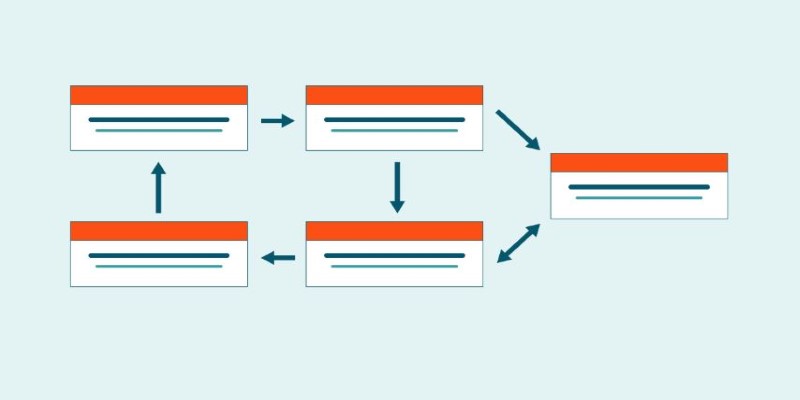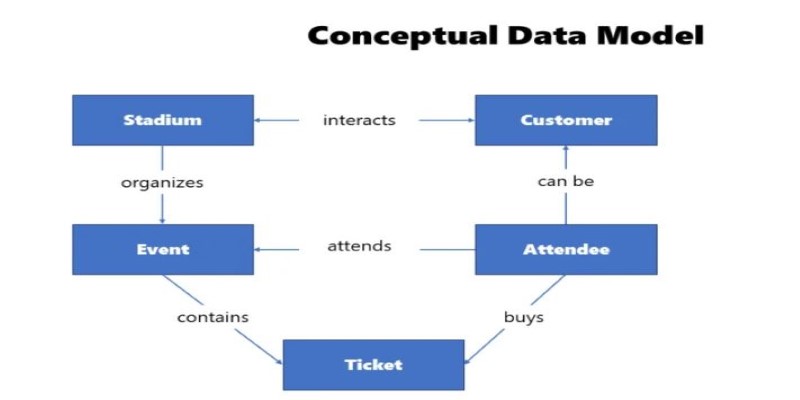Data is the basis of all digital systems, influencing how organizations handle information, make decisions, and create technology solutions. Raw data is not helpful, though, unless it is organized in a meaningful way. That is where conceptual data modeling fits in. It gives a high-level plan for how data is structured, establishing important entities and their relationships prior to any database being constructed.
In contrast to technology models that are full of implementation specifics, a conceptual model is about grasping business requirements and reducing intricate information structures. The method assists businesses and developers in communicating with one another using the same terminology so that data is built to facilitate actual processes.
The Purpose of Conceptual Data Modeling
Conceptual data modeling is the initial process of specifying how data should be organized in a system. Rather than getting down to technical details, it keeps things in perspective, defining the most essential data elements. The model acts as a reference, allowing stakeholders ranging from business analysts to software developers to concur on what data is required and how it relates to other information. By laying this groundwork early, organizations can avoid confusion, minimize expensive mistakes, and develop databases that match real-world procedures.
One of the greatest benefits of conceptual data modeling is its capacity to fill the gap between business users and technical teams. Business users frequently have trouble grasping technical diagrams with lots of tables, indexes, and keys. Rather, a conceptual model shows data in a straightforward and understandable form, employing common terms to define information. For instance, in a medical environment, a conceptual model might define things like "Patient," "Doctor," and "Appointment" and how they relate to one another. That clarity helps everyone see things alike before proceeding into database design and implementation.
In addition to clarity, conceptual data modeling also provides long-term flexibility. With time, companies grow and change their data requirements. If a database is created unplanned, it may be expensive and hard to change in the future. If a high-level model is created first, then companies can visualize future growth and make extendible data structures. Such an effort reduces the possibility of making enormous changes in the future.
Key Elements of a Conceptual Data Model
A conceptual data model consists of three main elements: entities, attributes, and relationships. Each plays a crucial role in structuring data in a way that aligns with real-world scenarios.

Entities are the building blocks of a conceptual model. They represent major data objects that an organization needs to track. These could be physical things, such as "Customer" or "Product," or abstract concepts, like "Order" or "Transaction." Entities are typically drawn as rectangles in conceptual diagrams, making them easy to identify.
Attributes describe the characteristics of each entity. If "Customer" is an entity, its attributes might include "Name," "Email," and "Phone Number." Attributes add meaning to the data, providing the details that make each entity unique. They are often listed within the entity box to show what kind of information needs to be stored.
Relationships define how entities are connected. Real-world data is rarely isolated; instead, different pieces of information relate to each other in meaningful ways. In a conceptual model, relationships are shown with lines linking entities together. For example, in a retail database, a "Customer" entity might be connected to an "Order" entity, showing that each customer can place multiple orders. These relationships help ensure that data is structured logically and supports the way an organization operates.
Unlike detailed technical models, conceptual models do not include specifics like foreign keys, indexes, or data types. The goal is to focus on the big picture rather than implementation details. This simplicity makes it easier for stakeholders to understand and refine the model before development begins.
The Benefits of Conceptual Data Modeling
One of the biggest benefits of conceptual data modeling is that it prevents costly mistakes. When organizations skip this step and jump straight into database development, they often discover problems too late. Issues such as missing relationships, poorly structured data, or inconsistent definitions can lead to major setbacks. By taking the time to create a conceptual model first, teams can identify potential issues early and make adjustments before any code is written.

Another advantage is improved communication. A well-designed conceptual model acts as a common reference point, helping teams collaborate more effectively. Business users can verify that the model captures their needs, while technical teams can use it as a guide for database design. This shared understanding reduces misunderstandings and speeds up development.
Conceptual data modeling also supports better decision-making. When data is organized clearly and structured, businesses can extract valuable insights more easily. Whether analyzing customer behavior, tracking sales trends, or optimizing supply chains, a well-structured database makes it possible to make data-driven decisions with confidence.
Scalability is another key benefit. As businesses grow, their data requirements change. A well-planned conceptual model ensures that databases can expand without major disruptions. Instead of patching together fixes later, organizations can design flexible structures from the start, allowing them to scale efficiently.
Finally, conceptual data modeling enhances data consistency. When data is not properly structured, inconsistencies arise—different departments may use different definitions for the same information, leading to confusion and errors. By defining entities, attributes, and relationships upfront, organizations ensure that data remains consistent across all systems.
Conclusion
Conceptual data modeling is a crucial step in designing structured and efficient data systems. By focusing on high-level organization rather than technical specifics, it ensures that data aligns with real-world business needs. This approach minimizes costly errors, improves communication between teams, and allows for scalable growth. Without a solid conceptual model, organizations risk confusion, inefficiencies, and rigid database structures. Investing in this initial planning phase saves time and resources while creating a data foundation that supports future expansion. Whether for a small application or a large enterprise, conceptual data modeling lays the groundwork for a structured, adaptable, and effective data system.
